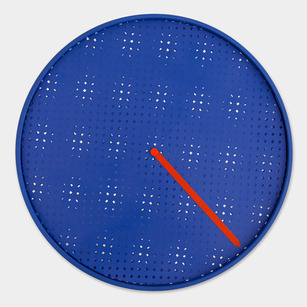Milton Glaser ShopTalk
Memorable moments from our recent talk with the lauded designer


Now 83 years old, Milton Glaser has become a name synonymous with meaningful graphic design. With a decades-long career under his belt that includes creating the iconic “I (Heart) NY” logo and many others, as well as co-founding Pushpin Studios and New York Magazine, the beloved designer is still brimming with ideas and advice. Last week we had the opportunity to both listen to and speak directly with Glaser as part of MoMA Design Store’s ShopTalk series where he recounted some of his recent work and the process behind his collection of clocks produced exclusively for the MoMA Design Store in late 2012.
Describing himself as simply “a person who likes to make things,” Glaser prefers to avoid what he feels are overly rigid titles of artist or graphic designer. This unassuming attitude toward design as a whole led MoMA to enlist Glaser to try his hand at product design. Approaching the task with one central question in mind (“How do you avoid the boring?”) Glaser created three clocks that do more than just tell time—a function, he feels, rendered unnecessary by cell phones. First and foremost he wanted the clocks to “create an atmosphere, and to be charming” and secondly, they must act as decoration, and be mutable.


“If you spend your life doing what you love, the speed at which the world goes on and changes around you is irrelevant.”
“I don’t follow any designers, it’s not my character. I mean there are a lot of young, good practitioners. I actually should be more conscious of what’s going on in the field but I’ve never used the field as my resource, I use history—and an awful lot of history I still don’t understand,” Glaser told us in regards to finding inspiration in the contemporary design community. “You know at a certain point you’re out of the mainstream because all of the practitioners that are central to your profession are in their 40s and 50s and are involved in different types of activities, so the field itself becomes no longer instructive. It’s mostly people that’re working under the assumption that they’re right and it’s very hard to then return to the center of activity.”
In closing Glaser left us with one last piece of sound advice that really resonated. “If you spend your life doing what you love, the speed at which the world goes on and changes around you is irrelevant.” Find Glaser‘s clock collection through MoMA Design Store online and in person.
Portrait by Graham Hiemstra, clock images courtesy of MoMA












